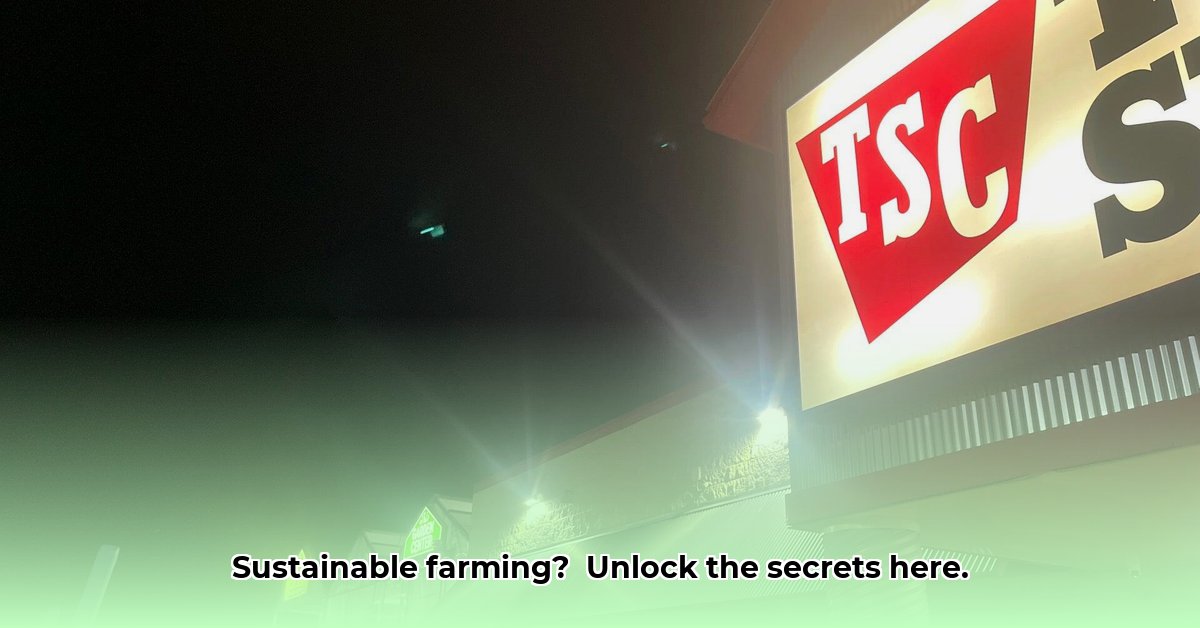
Understanding Tractor Supply's Role in Sustainable Agriculture
Tractor Supply Company (TSC) plays a significant, yet multifaceted, role in supporting sustainable farming practices in Buna, Texas. As a readily accessible retailer supplying essential agricultural inputs, TSC offers farmers and gardeners convenient access to seeds, fertilizers, equipment, and other necessities. However, evaluating TSC's overall contribution requires a deeper analysis beyond mere product availability. How do TSC's sourcing practices, waste management strategy, and corporate sustainability initiatives impact the environmental footprint of local agriculture? This guide explores those critical questions and offers actionable steps for improvement. For more on sustainable farming techniques, see this useful guide.
Assessing TSC's Environmental Impact: A Deeper Dive
While TSC's convenience undeniably benefits sustainable agriculture in Buna by enabling easier access to necessary supplies, a comprehensive assessment requires examining several key areas:
Product Sourcing: Are the seeds, fertilizers, and other products sold by TSC sourced sustainably, minimizing environmental impact throughout their supply chain? This crucial aspect directly influences the overall sustainability of local farming practices.
Waste Management: Does TSC implement effective waste reduction and recycling programs in its stores and operations? Understanding their waste management strategy is essential to evaluating their overall environmental footprint.
Product Durability and Efficiency: Do the tools and equipment sold by TSC promote long-term use and efficiency, minimizing waste and reducing the need for replacements? The lifespan of these products directly impacts their overall environmental impact.
A purely convenience-based assessment of TSC's role is insufficient. A comprehensive analysis necessitates a holistic view of its environmental footprint across its entire supply chain and operations. This requires data-driven evaluation and transparency from TSC itself. How can we ensure that TSC's convenient access to farming supplies translates into genuine contributions to sustainable agriculture?
Three Pivotal Points for Improving TSC's Sustainability Impact
Transparency Is Key: TSC must provide detailed information regarding its sourcing practices, waste management strategies, and carbon footprint. Without transparency, accurate assessment and accountability are impossible.
Collaborative Efforts: TSC needs to foster partnerships with local farmers and environmental organizations to promote sustainable agricultural techniques and reduce the environmental impact of farming practices.
Sustainable Product Focus: TSC should prioritize stocking and promoting products with demonstrably sustainable characteristics, encouraging consumer choice towards environmentally responsible options. By actively supporting and promoting sustainable products, TSC can significantly amplify their positive impact.
Actionable Steps for a Greener Future: A Five-Step Plan
Phase 1: Transparency and Assessment (Year 1)
Conduct a Comprehensive Supply Chain Audit: TSC should conduct a thorough audit of its entire supply chain to identify and address environmental impacts in sourcing, manufacturing, and transportation. This will provide a foundation for setting future objectives.
Implement a robust data collection program: Track essential environmental metrics – energy usage, waste generation, water consumption – across their operations to establish a baseline for measuring progress.
Publish a detailed sustainability report: Transparency is crucial. TSC needs to publish a comprehensive sustainability report detailing its environmental performance, targets, and progress, verified by an independent third-party auditor to build public trust. (Example: Similar to GRI Standards reporting)
Phase 2: Collaboration and Improvement (Years 2-3)
Partner with local farmers and environmental organizations: Initiate collaborative programs promoting sustainable farming practices, such as workshops focusing on resource efficiency, waste reduction, and soil conservation techniques. This collaborative focus fosters shared responsibility and innovation.
Invest in Research and Development: TSC should invest in research and development to uncover more sustainable product alternatives, including exploring bio-based materials and eco-friendly packaging options. This proactively reduces the environmental footprint of their product offerings.
Phase 3: Long-Term Strategy and Implementation (Years 4-5)
Establish science-based targets: TSC should commit to science-based reduction targets for their greenhouse gas emissions, aligning with the goals of the Paris Agreement. This demonstrates a serious commitment to climate action.
Develop a sustainable product certification program: Create a transparent certification process for products meeting specific sustainability criteria, empowering consumers to make informed choices. This incentivizes sustainable sourcing and manufacturing practices throughout the supply chain.
Continuously monitor and report progress: Regular updates and transparency in reporting are crucial for maintaining accountability and driving continuous improvement efforts.
Conclusion: A Collaborative Approach to Sustainable Farming
The journey toward sustainable agriculture requires a collective effort. By embracing transparency, collaboration, and a commitment to continuous improvement, TSC can significantly enhance its contribution to environmental sustainability in Buna and beyond. This requires a shift beyond simple product availability towards a holistic approach that considers the entire lifecycle of products and their impact on the environment. Only with this commitment can TSC fully realize its potential as a catalyst for sustainable farming practices in the local community.